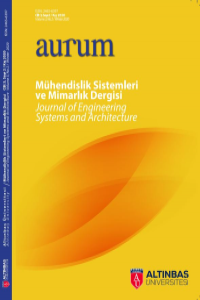Abstract
With the development of medical applications, the processing of electromyography signals has gained an
important place in biomedical field. The detection, processing and classification of EMG signals is crucial
because it enables a more standard assessment of different neuromuscular diseases [Kehri et al.( 2016)]. This
article examines neuromuscular diseases based on EMG signals by using classification methods as Multilayer
Perceptron Neural Networks and C4,5 decision tree classifiers. In these methods, an autoregressive (AR) EMG
signal model was used as input to the classification system. 1200 MUAPs data gathered from 7 healthy subjects,
7 myopathy patients and 13 neurogenic patients were analyzed. Total accuracy of Multilayer Perceptron
algorithm is 98.1% and the total accuracy of C4.5 Decision Tree is 94.8%. Comparisons between these two
classifiers are made using a set of scalar performance criteria for classification.
Keywords
References
- Basheer, I. A., & Hajmeer, M. (2000). Artificial neural networks: fundamentals, computing, design, and application. J Microbiol Meth, 3–31.
- Bayat, Oğuz; Salman, İhsan; Uçan, Osman Nuri; Shaker, Khalid;. (2018). Impact of Metaheuristic Iteration on Artificial Neural Network Structure in Medical Data. İstanbul: MDPI Open Access Journals.
- Cohen, A. (2006). Biomedical signals: Origin and dynamic characteristics; frequency-domain analysis. Medical Devices and Systems.
- Elamvazuthi, I.; Duy, N.H.X; , Zulfiqar Ali; Su, S.W.; Ahamed Khan, M.K.A.; S., Parasuraman;. (2015). Electromyography (EMG) based Classification of Neuromuscular Disorders using Multi-Layer Perceptron. International Symposium on Robotics and Intelligent Sensors. Malaysia.
- Güler, İnan; Kıymık, Mustafa Kemal; Akın, Mehmet; Alkan, Ahmet;. (2001). AR spectral analysis of EEG signals by using maximum likelihood estimation. Computers in Biology and Medicine, 31(6), 441-450.
- Haselsteiner, E., & Pfurtscheller, G. (2000). Using time-dependent neural networks for EEG classification. IEEE Trans Rehab Eng, 457–63.
- Hojjat, Adeli; Ziqin, Zhou; Nahid, Dadmehr;. (2003). Analysis of EEG records in an epileptic patient us,ng wavelet transform. Journal of Neuroscience Methods, 123(1), 69-87.
- Kehri, V.; Ingle, R.; Awale, R.; Oimbe, S.;. (2016). Techniques of EMG signal analysis and classification of neuromuscular diseases. Atlantis Press.Mumenthaler, M., & Mattle, H. (2002). Neurology. Thieme Medical Publishers.
- Subasi, A., Yılmaz, M., & Ozcalik, R. (2006). Classification of EMG signals using wavelet neural network. Journal of Neuroscience Methods, 360–367.
- Yaman, E.; Yaman, M.A; Subaşı, A.; Rattay, F.;. (2011). EMG SIGNAL CLASSIFICATION USING DECISION TREES AND. International Journal of Arts & Sciences.
- Mumenthaler, M., & Mattle, H. (2002). Neurology. Thieme Medical Publishers.
Abstract
Tıbbi uygulamaların gelişmesiyle birlikte elektromiyografi sinyallerinin işlenmesi biyomedikal alanda önemli
bir yer edinmiştir. EMG sinyallerinin tespiti, işlenmesi ve sınıflandırılması farklı nöromüsküler hastalıkların daha
standart bir değerlendirme sağlanması açısından oldukça önemlidir. Bu makale EMG sinyallerine dayanan
nöromüsküler hastalıkları Çok Katmanlı Algı Sinir Ağları ve C4,5 Karar Ağacı sınıflandırma yöntemlerini
kullanarak incelemektedir.
Keywords
References
- Basheer, I. A., & Hajmeer, M. (2000). Artificial neural networks: fundamentals, computing, design, and application. J Microbiol Meth, 3–31.
- Bayat, Oğuz; Salman, İhsan; Uçan, Osman Nuri; Shaker, Khalid;. (2018). Impact of Metaheuristic Iteration on Artificial Neural Network Structure in Medical Data. İstanbul: MDPI Open Access Journals.
- Cohen, A. (2006). Biomedical signals: Origin and dynamic characteristics; frequency-domain analysis. Medical Devices and Systems.
- Elamvazuthi, I.; Duy, N.H.X; , Zulfiqar Ali; Su, S.W.; Ahamed Khan, M.K.A.; S., Parasuraman;. (2015). Electromyography (EMG) based Classification of Neuromuscular Disorders using Multi-Layer Perceptron. International Symposium on Robotics and Intelligent Sensors. Malaysia.
- Güler, İnan; Kıymık, Mustafa Kemal; Akın, Mehmet; Alkan, Ahmet;. (2001). AR spectral analysis of EEG signals by using maximum likelihood estimation. Computers in Biology and Medicine, 31(6), 441-450.
- Haselsteiner, E., & Pfurtscheller, G. (2000). Using time-dependent neural networks for EEG classification. IEEE Trans Rehab Eng, 457–63.
- Hojjat, Adeli; Ziqin, Zhou; Nahid, Dadmehr;. (2003). Analysis of EEG records in an epileptic patient us,ng wavelet transform. Journal of Neuroscience Methods, 123(1), 69-87.
- Kehri, V.; Ingle, R.; Awale, R.; Oimbe, S.;. (2016). Techniques of EMG signal analysis and classification of neuromuscular diseases. Atlantis Press.Mumenthaler, M., & Mattle, H. (2002). Neurology. Thieme Medical Publishers.
- Subasi, A., Yılmaz, M., & Ozcalik, R. (2006). Classification of EMG signals using wavelet neural network. Journal of Neuroscience Methods, 360–367.
- Yaman, E.; Yaman, M.A; Subaşı, A.; Rattay, F.;. (2011). EMG SIGNAL CLASSIFICATION USING DECISION TREES AND. International Journal of Arts & Sciences.
- Mumenthaler, M., & Mattle, H. (2002). Neurology. Thieme Medical Publishers.
Details
| Primary Language | English |
|---|---|
| Subjects | Artificial Intelligence |
| Journal Section | Research Article |
| Authors | |
| Publication Date | February 11, 2020 |
| Submission Date | September 30, 2019 |
| Acceptance Date | December 24, 2019 |
| Published in Issue | Year 2019 Volume: 3 Issue: 2 |
.


